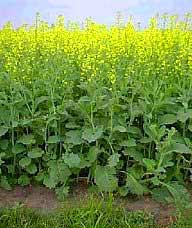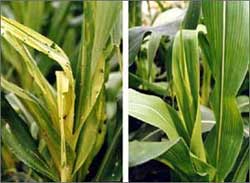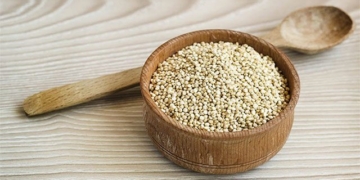When Monsanto introduced genetically modified (GM) crops to the world 10 years ago, many predicted that advancements in biotechnology heralded a new era that could help reduce poverty and protect the environment…
 |
Genetically Modified Canola |
Now, genetically modified varieties of soybeans, cotton, corn, and canola are profitable products for Monsanto, while also enriching its competitors, such as Syngenta and Dow AgroSciences LLC from Switzerland. The profits are primarily due to the acceptance of GM crops in the U.S. market, which appreciate their resistance to herbicides and insects as well as their high yields.
A Step Forward… A Step Back
However, a decade has passed, and many countries still ban this technology due to concerns about potential dangers to human health and the environment. Currently, only 18 countries are cultivating GM crops. Indeed, with almost every advancement, there seems to be a step back.
Last month, the Kellogg Company announced it would begin using low-linolenic oil from Monsanto’s GM soybeans in cookies and other foods. Yet, less than two weeks later, Kraft Foods, Kellogg’s competitor and the second-largest food manufacturer in the world, announced it would stop supplying all GM foods, including additives, to China. The reason given was that consumers are less accepting of these products. Pepsico and Coca-Cola have also made similar commitments.
Recently, there have been more setbacks: In October 2005, Swiss voters decided to ban the cultivation of GM crops for five years, and GM peas were linked to potential health risks in research mice, leading authorities to cancel the planting project in Australia. In 2004, Monsanto had to cancel a GM wheat variety it intended to sell in the U.S. and Canada due to strong consumer opposition. Other failed projects included genetically modified slow-ripening tomatoes and a better-quality potato variety from Monsanto.
Critics argue that GM crops have caused more problems than the issues they address, such as the emergence of herbicide-resistant weeds. Supporters counter that GM crops are environmentally friendly as they can reduce the amount of chemicals needed for cultivation. Opponents rebut that chemical use has increased significantly due to resistant weeds and other issues. Furthermore, while farmers may achieve higher profits (due to increased yields), they must buy GM seeds at higher prices. This technology has yet to reduce poverty since many impoverished countries cannot or are not ready to adopt it.
What Future Awaits Biotechnology Crops?
Despite this, the area planted with GM crops worldwide is increasing. By 2005, the area dedicated to soybeans, corn, cotton, canola, and other varieties exceeded 400 million hectares. In the U.S., 52% of corn, 79% of cotton, and 87% of soybeans in the 2004-2005 season were GM varieties.
 |
GM Insect-Resistant Corn (right) vs. Regular Corn |
An industry report shows a positive growth outlook for GM crops in both the U.S. and many other countries. Barriers in Europe are gradually being lowered, and new varieties currently under development will make GM products more acceptable to consumers. According to supporters, cotton, corn, soybeans, and canola remain the leading GM crops, but many new varieties are expected in the future.
Iran became the first country to commercialize genetically modified rice with pest resistance in 2004. Last year, Syngenta announced the creation of a “golden rice” variety with beta-carotene levels 23 times higher than previous varieties. This rice will be distributed free of charge to research centers throughout Asia.
Michael Fernandez, Executive Director of the Pew Initiative on Food and Biotechnology, stated that there is now a significant investment in agricultural biotechnology in China, Argentina, Chile, and other countries. Genetically modified rice is likely to be allowed for cultivation in China in the near future—a move that could change global attitudes and garner support for GM foods.
Minh Sơn (According to Reuters, AFP, AP)




















































